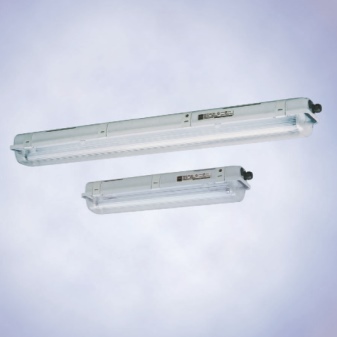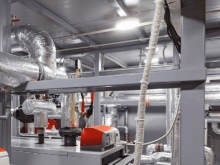What should be the lighting in the boiler room?

Boiler rooms rarely have large windows, and therefore they often require additional lighting. Also, a small daylight hours limits the owners of the boiler room in natural light. To make the stay in the room of people comfortable and safe, it is necessary to install additional sources of artificial light. There are two types of backlighting: working and non-standard.



Peculiarities
Before buying lamps, you must consider all the characteristics of the room. An ordinary boiler room is a room with a heating boiler located in it, which runs on solid or gaseous fuels. The main goal is to generate heat, with the help of which a complex of residential buildings or industrial premises is heated.
Small boiler rooms attached to a private house or cottage also heat it with solid fuel.



Requirements
The production area and the living room require different types of lighting fixtures. Excellent illumination is provided by LED light sources. Their advantages include efficiency and high concentration of light radiation.
Luminaires in the boiler room, according to the PUE, must have a high degree of moisture resistance. This figure should not be less than IP-68. In rooms with heating devices, liquid evaporation often occurs in the form of vapor, which settles on lamps and wiring. It can cause a short circuit. In order to prevent this, you should pay attention to the protection class when purchasing.



Boiler rooms must have a source of natural light. During the day, the room is illuminated by open window openings, and in the evening - by lamps. Artificial light is needed so that all objects in the workspace and on the control panel are visible.
Sanitary standards for illumination regulate the proximity to the boiler room of other premises: domestic or industrial. In addition, humidity above the set threshold is unacceptable. The prerequisites for a room with heating devices present in it are the removal of steam, gases and dust, as well as compliance with the established temperature regimes.
When a boiler room heats a residential complex on gas and it is located on the first or basement of a residential building or is attached to it, then the rate of natural light is set by glazing at the rate of 0.03 m² per 1 m³ of the room.



Emergency lighting
The operation of the boiler room is often accompanied by accidents that may arise due to equipment malfunctions. As a result of a fire or damage to the wiring, a power outage may occur - the standard lamps in the room will immediately go out. And in order to restore equipment after an accident, or at least control it, additional light sources are needed.
To prevent the heating equipment from being left without light, emergency lamps are mounted. It is recommended to place them in the immediate vicinity of the boiler and the control panel. The brightness should be quite saturated, otherwise in the event of an accident, repairmen will need portable flashlights.


Emergency light sources should be placed in the following places:
- back wall of the boiler;
- the space between the boiler and the wall;
- equipment control panels;
- ventilation system;
- smoke extraction area;
- measuring equipment;
- pumping stations;
- zone with solid fuel.
Fluorescent lamps are used as emergency lighting. They are small in size, economical to use and have a high efficiency. These lamps are rechargeable, so they stay on even in emergency situations.
The power of the luminaires must match the working light.


LED bulbs are reliable, they cannot explode on power surges. They need very little electricity to work. Many people buy them because of the budget cost, because manufacturers are constantly improving technologies, reducing prices.
Emergency bulbs need to be marked in a special way so as not to confuse them with regular lamps. To do this, make marks with paint or a marker. If these are not at hand, you can print out emergency light signs and place them next to the luminaire.
Emergency luminaires are placed between standard lamps. The optimal quantity is 12 pieces. This is enough for the boiler house workers to see the whole work process. The luminous flux is directed identically to work lamps.



The boiler room in a residential building looks like an extension with a gas or solid fuel boiler. There must be a window opening in the room.
First, it provides natural daylight. Secondly, in the event of an explosion or damage to the pipeline, the window will serve as an opening for the blast wave to exit.
Such a boiler room must be provided with artificial lighting. You can buy energy-saving bulbs: they have a high utilization of the luminous flux and at the same time save energy. The second option is LED lamps, which are placed next to the boiler control panel.



Backlight selection criteria
LED lamps will fully perform their functions only if if they are placed in accordance with the architectural features of the room and its functional purpose.
- In a large room, it is better to choose a trunk lighting system. Then the light will be evenly distributed without creating large blinding beams.
- Rectangular luminaires are often used in industrial environments. The reason for this is the versatility of their placement. They cope with their duties in the same way, being both suspended from the ceiling and placed on the wall.
- When a concentrated beam of light is needed, it is best to choose a bell-shaped luminaire.
- The emergency lighting system should be based on battery powered luminaires. LED bulbs are best suited for this.




Another nuance when choosing lamps is the need for regular cleaning, especially in rooms where there is a solid fuel boiler. In this case, it is better to buy models that can be washed with a direct stream of water.
What should be the boiler room, see the video.













The comment was sent successfully.